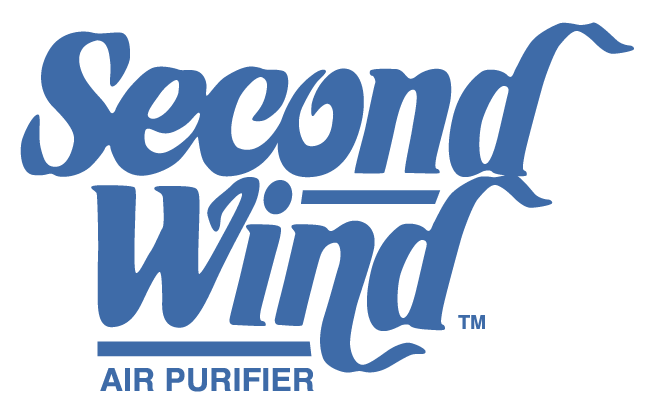From RodaleNews.com
1. Clean Up Your Indoor Air
Smokestacks and tailpipes are obvious air-quality annihilators, but your main exposure to asthma-triggering, headache-creating air pollution is likely coming from right inside your own home! Major culprits like radon and cigarette smoke are probably already on your radar, but how about your showerhead and cookware? The Environmental Protection Agency estimates that indoor air pollution can be up to eight times worse inside than outside. Luckily, there are easy changes you can make to clear the air and potentially eliminate indoor air pollutants that have been linked to not only asthma attacks, but dizzy spells, obesity, and even worse, cancer.
2. Steamy Showers
You may already filter your drinking water, but what about your shower water? President Obama's Cancer Panel recommended that installing both drinking and shower water filters could be one of the most important things you can do to protect yourself from developing cancer. During tubby time, you can absorb 100 times more chlorine in a 10-minute shower than you do drinking a gallon of the same water. Without a filter and ventilation, that toxic chlorine becomes airborne and gases throughout your home.
Easy Fix: To filter out chlorine, be sure to look for NSF/ANSI Standard 177: Shower Filtration Systems - Aesthetic Effects, which means it's third-party tested to effectively remove chlorine. If a water test turns up elevated levels of other contaminants, make sure you buy a filter that is certified to remove them.
3. Your Scary Basement
You've probably heard about radon, and the importance of properly testing for the naturally occurring, cancer-causing gas. While it's certainly important, there are other things in your basement that could be trashing your air, too. Paint cans, even sealed ones, often leak airway-annihilating volatile organic compounds, aka VOCs.
Easy Fix: Take old paint to a waste-collection facility for recycling, or donate it to neighbors or a charity. Store any new paint in an unattached shed or garage, if possible.
4. Furniture
It's not just old, leftover paint cans that waft harmful airborne contaminants. VOCs creep out of the glues and binders used in plywood and particleboard—composite wood products commonly used in household furnishings and cabinetry.
Easy Fix: For existing pressed wood materials, seal with AFM Safecoat Safe Seal to help keep the toxic compounds out of the air. In the future, look for Forest Stewardship Council–certified solid wood products, or lead-free secondhand furniture.
5. Your Daily Beauty Routine
You may already eat organic, but did you ever thing about the artificially perfumed and fragranced ingredients your skin and lungs readily absorb? While most of us don't roll out of bed looking like a million bucks, the truth is that between all of the deodorant, hair products, cologne, and other products, we're likely coating ourselves with questionable ingredients nearly every day. That adds up.
Easy Fix: Look for safer personal care products at Environmental Working Group's Skin Deep Cosmetic Safety Database to rate your current soaps, shampoos, lotions, and other potions. Don't freak if yours contains harmful ingredients. Just use the database to find safer products. A good starting point is choosing safer soap. We like Dr. Bronner's Organic Baby Mild soap, perfect for little ones and adults. An easy trick? Avoid anything that lists "parfum" or "fragrance" on the ingredients list.
6. Off-Gassing Ornaments
Think your gingerbread Christmas ornament is innocent? If it's made of plastic, the cute little decoration could actually be polluting your indoor air. A 2009 study published in the journal Ground Water Monitoring & Remediation found that a single plastic "polyresin" Christmas ornament was polluting the home with the industrial solvent 1,2-dichlorethane (DCA), a possible human carcinogen.
Easy Fix: Opt for holiday decorations made of glass, fabrics, or other natural materials, and steer clear of plastic as much as possible.
7. Cozy Carpeting
Carpeting may feel nice under your feet, but it's a bad choice in terms of protecting indoor air quality because the fibers trap dust and dander, triggering asthma and allergy attacks. Some carpets also off-gas VOCs, while carpet padding could be treated with hormone-disrupting flame-retardant chemicals. Easy Fix: Damp-mopping hardwood or bamboo floors can rid the house of harmful dust. If you still want carpeting, choose Green Label products, which are said to contain lower VOC levels. A good vacuum can go a long way toward improving indoor air quality, too. Look for ones with a HEPA filter…Hoover, Kenmore, Bissell, Eureka, and Miele brands have tested well in both Consumer Reports and Good Housekeeping Institute tests.
8. Home Printers
Ever feel dizzy after printing off a bunch of photos on your home computer? Those little ink cartridges often emit air-polluting VOCs, and other lesser-known contaminants labeled as glymes. These solvent chemicals fall into the glycol ether family and are also used in some chemical carpet cleaners. The Environmental Protection Agency in 2011 announced it will take a stronger stance against glymes, which have been linked to higher rates of miscarriage.
Easy Fix: Only print what you need at home, and make sure your printing area is well ventilated.
9. Mood Enhancers
There's nothing like a lit candle to set the mood, but most candles sold today emit cancer-causing benzene and toluene, as well as other hydrocarbon, respiratory-irritating chemicals called alkanes and alkenes—these are things that come out of car tailpipes…not sexy!
Easy Fix: Choose beeswax candles—they actually put off negative ions that help cleanse your air. Avoid synthetically scented candles. If you use aromatherapy, choose organic pure essential oils. (If you experience headaches, you might want to choose another brand or choose beeswax candles instead.)
10. Your Laundry Room
Don't let clean clothes cost you your health.Laundry product ingredients containing artificial perfumes and fragrances create laundry room and dryer vent pollution on par with vehicle exhaust. "This is an interesting source of pollution because emissions from dryer vents are essentially unregulated and unmonitored," says lead study author Anne C. Steinemann, professor of civil and environmental engineering and public affairs at University of Washington. "If they're coming out of a smokestack or tailpipe, they're regulated, but if they're coming out of a dryer vent, they're not."
Easy Fix: Choose unscented, plant-based laundry detergents, and skip the dryer sheets and fabric softener.
11. Convenience Cookware
Nonstick cookware is a savior when it comes to quick cleanups after a meal, but polytetrafluoroethylene, the chemical used in nonstick cookware, can pollute the air in your home. (So much so that it is known to kill pet birds.) Equally a bummer, nonstick cookware has been linked to thyroid disease, obesity, and ADHD in people.
Easy Fix: If you use nonstick cookware, don't freak out. But when you start seeing scratches and nicks in the finish, replace with untreated stainless steel, stoneware, or domestic cast iron cooking products.
12. Your "Clean" House
Mixing common household cleaners such as ammonia and bleach creates a dangerous level of lung-damaging ozone inside your house. Even if you don't accidentally create science-experiment combinations while cleaning, cleaners at the store often contain those same harmful asthma-triggering, hormone-disrupting perfumes and fragrances found in candles, air fresheners, and soap and shampoo products.
Easy Fix: Forget expensive, often toxic cleaners, and instead mix your own for pennies! Green cleaning staples include basic ingredients like hydrogen peroxide, white vinegar, and baking soda.








